-
 Bitcoin
Bitcoin $115800
-2.47% -
 Ethereum
Ethereum $3690
1.19% -
 XRP
XRP $3.105
-1.91% -
 Tether USDt
Tether USDt $0.9999
-0.07% -
 BNB
BNB $771.0
0.19% -
 Solana
Solana $179.9
-3.54% -
 USDC
USDC $0.9998
-0.03% -
 Dogecoin
Dogecoin $0.2291
-3.40% -
 TRON
TRON $0.3140
0.81% -
 Cardano
Cardano $0.8007
-1.24% -
 Hyperliquid
Hyperliquid $42.92
-0.44% -
 Stellar
Stellar $0.4212
-2.16% -
 Sui
Sui $3.730
0.03% -
 Chainlink
Chainlink $18.06
0.03% -
 Bitcoin Cash
Bitcoin Cash $546.6
5.08% -
 Hedera
Hedera $0.2438
0.55% -
 Avalanche
Avalanche $23.57
-0.81% -
 Litecoin
Litecoin $114.2
1.04% -
 UNUS SED LEO
UNUS SED LEO $8.970
-0.35% -
 Shiba Inu
Shiba Inu $0.00001363
-0.16% -
 Toncoin
Toncoin $3.136
-0.89% -
 Ethena USDe
Ethena USDe $1.001
-0.04% -
 Uniswap
Uniswap $10.30
1.42% -
 Polkadot
Polkadot $4.013
-0.06% -
 Monero
Monero $324.8
0.87% -
 Dai
Dai $0.9999
-0.04% -
 Bitget Token
Bitget Token $4.509
-1.38% -
 Pepe
Pepe $0.00001226
-2.60% -
 Aave
Aave $291.8
1.34% -
 Cronos
Cronos $0.1294
2.19%
How to operate the monthly Bollinger closing + weekly MACD bottom divergence + daily long lower shadow?
A bullish reversal setup in crypto combines monthly Bollinger close, weekly MACD divergence, and daily long lower shadow for high-probability entries.
Jul 24, 2025 at 12:07 pm
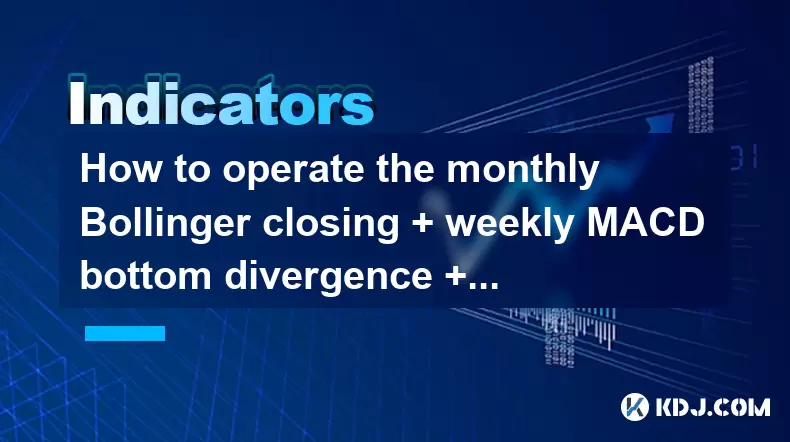
Understanding the Components of the Strategy
The strategy combining monthly Bollinger closing, weekly MACD bottom divergence, and daily long lower shadow relies on multiple time frame analysis to identify high-probability bullish reversal setups in cryptocurrency markets. Each component plays a distinct role in filtering false signals and confirming strength. The monthly Bollinger closing refers to the price action at the end of the month where the closing price touches or falls below the lower Bollinger Band, signaling potential oversold conditions on a long-term basis. This is a rare but powerful signal, especially in volatile crypto assets like Bitcoin or Ethereum.
The weekly MACD bottom divergence occurs when the price makes a lower low, but the MACD histogram or line forms a higher low, indicating weakening bearish momentum. This divergence suggests that selling pressure is decreasing even as prices decline, often preceding a reversal. The third element, the daily long lower shadow, appears when the candlestick has a significantly longer lower wick compared to its body, showing that buyers stepped in aggressively after a sharp drop, rejecting lower prices.
Together, these signals create a confluence of evidence across different time frames, increasing the reliability of a potential bullish reversal. Traders should ensure that all three conditions are met before considering entry.
Setting Up the Chart Configuration
To effectively monitor this strategy, traders must configure their trading platform to display three time frames simultaneously: monthly, weekly, and daily. Most platforms like TradingView, MetaTrader, or Binance’s built-in charting tools support multi-timeframe analysis. Begin by opening a new chart and selecting the cryptocurrency pair of interest, such as BTC/USDT.
- Add the Bollinger Bands (20,2) indicator to the monthly chart. Confirm that the settings are standard: 20-period moving average with 2 standard deviations.
- On the weekly chart, apply the MACD (12,26,9) indicator. Ensure the histogram and signal line are visible.
- On the daily chart, enable candlestick patterns and consider adding volume to validate the long lower shadow.
It is essential to adjust the chart to show enough historical data—ideally 12 to 24 months—to capture sufficient monthly and weekly cycles. Enable alerts for when the monthly close touches the lower Bollinger Band, as this event may only occur once every few months in major cryptocurrencies.
Identifying the Monthly Bollinger Closing Signal
The monthly Bollinger closing signal is triggered when the final candle of the month closes at or below the lower Bollinger Band. This is not a real-time signal; it only confirms after the month ends. For example, if the current month is April, traders must wait until the April monthly candle fully closes at 00:00 UTC on May 1st.
- Monitor the price as the month approaches its end.
- If the price is near the lower Bollinger Band in the final days, prepare for potential confirmation.
- Once the monthly candle closes below or on the lower band, mark it as a valid signal.
- Avoid acting before the close; premature entries may fail if the price rebounds within the month.
This signal alone is not sufficient for a trade. It acts as a filter indicating that the asset is potentially oversold on a macro level. Historical data shows that such events often precede medium to long-term reversals in cryptocurrencies, especially after extended downtrends.
Confirming Weekly MACD Bottom Divergence
After the monthly Bollinger signal is confirmed, the next step is to check for weekly MACD bottom divergence. This requires comparing price lows and MACD values across two or more troughs.
- Identify the most recent weekly low and the one before it.
- If the second low is lower than the first in price but the MACD histogram or MACD line is higher, divergence exists.
- Draw a trendline connecting the MACD lows to visualize the divergence clearly.
- Ensure the divergence occurs on the weekly chart, not daily or intraday.
For example, if Bitcoin drops to $50,000 in one week and then to $48,000 the next, but the MACD line rises from -5 to -3, this confirms divergence. This indicates that momentum is shifting despite the price decline. The presence of divergence strengthens the case for a reversal, especially when aligned with the monthly Bollinger signal.
Analyzing the Daily Long Lower Shadow
The final condition is the appearance of a daily long lower shadow shortly after the monthly and weekly signals. This candlestick pattern typically forms when sellers push the price down during the day, but buyers recover and close near the high of the day.
- Define a long lower shadow as at least twice the length of the candle body.
- The upper body can be small or even absent (a hammer or inverted hammer pattern).
- The shadow should occur within 1–3 days after the monthly close confirmation.
- Volume should ideally increase on the day of the long shadow, confirming buyer interest.
For instance, if the daily candle has a low of $47,000, closes at $49,500, and the body is only $500 tall, the $2,000 lower shadow qualifies. This shows strong rejection of lower prices. The combination of all three signals—monthly Bollinger close, weekly MACD divergence, and daily long lower shadow—creates a high-conviction setup.
Executing the Trade Entry and Risk Management
Once all three conditions are met, traders can consider entering a long position.
- Enter at the close of the daily candle with the long lower shadow or at the open of the next day.
- Place a stop-loss below the low of the long-shadow candle, allowing room for volatility.
- Set a take-profit level using Fibonacci extensions or prior resistance zones.
- Allocate no more than 2–5% of total capital per trade to manage risk.
For example, if the long-shadow candle’s low is $47,000, place the stop-loss at $46,000. Target $55,000 if that aligns with a historical resistance level. Use a position size calculator to determine the number of contracts or coins based on the stop-loss distance.
Avoid averaging down or moving the stop-loss wider without justification. Stick to the plan and let the market confirm the reversal.
Frequently Asked Questions
What if the monthly close touches the lower Bollinger Band but there’s no MACD divergence?
If the weekly MACD does not show bottom divergence, the signal is incomplete. Wait for divergence to appear before considering entry. A monthly Bollinger touch without divergence may still be in a strong downtrend.
Can this strategy be applied to altcoins?
Yes, but only to altcoins with sufficient trading volume and historical data. Low-cap altcoins may show false signals due to manipulation or low liquidity. Stick to major altcoins like ETH, BNB, or SOL for better reliability.
How long should I wait for the daily long lower shadow after the monthly close?
Ideally, the long lower shadow should appear within the first week of the new month. Waiting beyond 7–10 days increases the risk of missed momentum. If it doesn’t form, the setup may be invalid.
Is it necessary to use the default Bollinger Band settings (20,2)?
Yes, the (20,2) settings are standard and widely recognized. Changing them may alter the signal frequency and reliability. Maintain consistency across all assets for comparable results.
Disclaimer:info@kdj.com
The information provided is not trading advice. kdj.com does not assume any responsibility for any investments made based on the information provided in this article. Cryptocurrencies are highly volatile and it is highly recommended that you invest with caution after thorough research!
If you believe that the content used on this website infringes your copyright, please contact us immediately (info@kdj.com) and we will delete it promptly.
- Pump, Bonk, Buyback: A Wild Ride in Crypto Town!
- 2025-07-25 19:10:12
- Punisher Coin, Dogecoin, Shiba Inu: Meme Coin Mania in the 2025 Crypto Landscape
- 2025-07-25 19:10:12
- Celestia's Token Control: Buyback & Staking Overhaul in Focus
- 2025-07-25 19:50:11
- Altcoins, Bitcoin, and Crypto Coins: What's Hot in the NYC Crypto Scene?
- 2025-07-25 19:55:52
- Litecoin Price Breakout Imminent? Rally Potential Explored!
- 2025-07-25 17:30:12
- Ether ETFs Surge, Bitcoin Wobbles: Is an ETH Breakout Imminent?
- 2025-07-25 16:50:12
Related knowledge

How to interpret that the KDJ D line is downward for a long time but the price is sideways?
Jul 25,2025 at 07:00pm
Understanding the KDJ Indicator and Its ComponentsThe KDJ indicator is a momentum oscillator widely used in cryptocurrency trading to assess overbough...

What does it mean that the KDJ indicator forms a double bottom at a low level?
Jul 25,2025 at 05:08pm
Understanding the KDJ Indicator in Cryptocurrency TradingThe KDJ indicator is a momentum oscillator widely used in cryptocurrency trading to identify ...
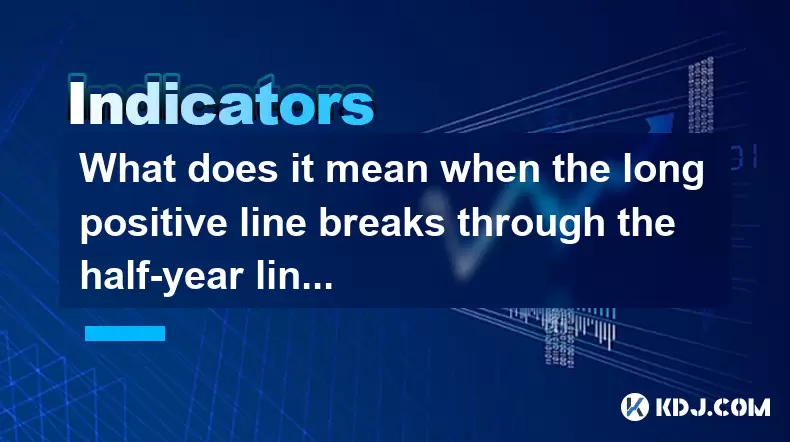
What does it mean when the long positive line breaks through the half-year line and then steps back?
Jul 25,2025 at 06:49pm
Understanding the Long Positive Line in Candlestick ChartsIn the world of cryptocurrency trading, candlestick patterns play a vital role in technical ...
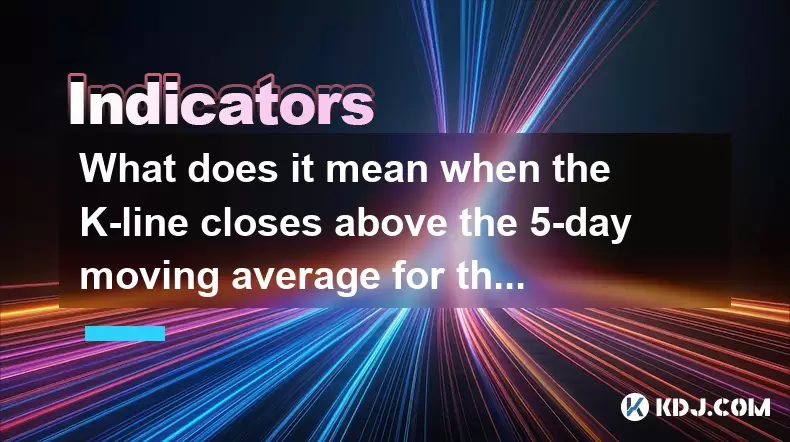
What does it mean when the K-line closes above the 5-day moving average for three consecutive days?
Jul 25,2025 at 10:07pm
Understanding the K-line and 5-day Moving AverageThe K-line, also known as a candlestick, is a critical charting tool used in technical analysis to re...
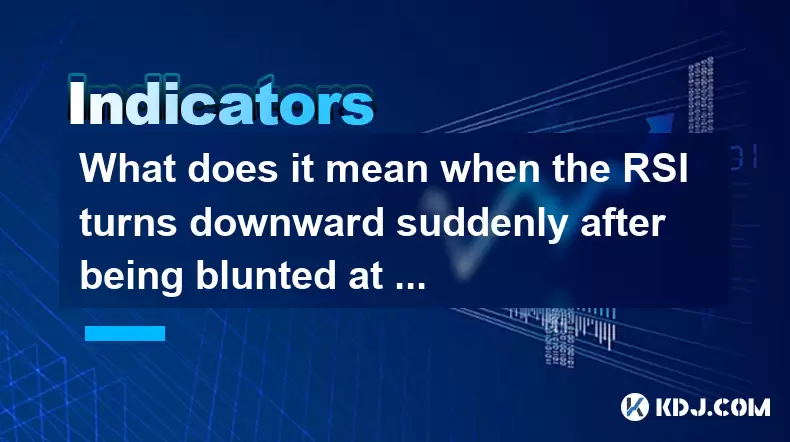
What does it mean when the RSI turns downward suddenly after being blunted at a high level?
Jul 25,2025 at 04:00pm
Understanding the RSI and Its Role in Technical AnalysisThe Relative Strength Index (RSI) is a momentum oscillator that measures the speed and change ...
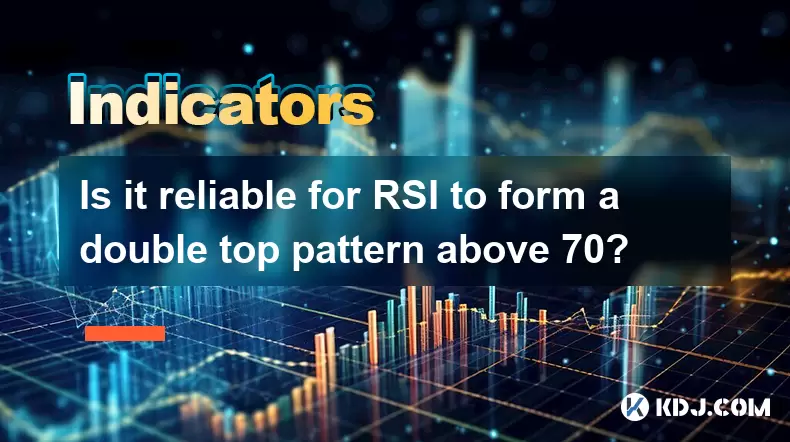
Is it reliable for RSI to form a double top pattern above 70?
Jul 25,2025 at 04:49pm
Understanding the RSI Indicator and Its Role in Technical AnalysisThe Relative Strength Index (RSI) is a momentum oscillator that measures the speed a...

How to interpret that the KDJ D line is downward for a long time but the price is sideways?
Jul 25,2025 at 07:00pm
Understanding the KDJ Indicator and Its ComponentsThe KDJ indicator is a momentum oscillator widely used in cryptocurrency trading to assess overbough...

What does it mean that the KDJ indicator forms a double bottom at a low level?
Jul 25,2025 at 05:08pm
Understanding the KDJ Indicator in Cryptocurrency TradingThe KDJ indicator is a momentum oscillator widely used in cryptocurrency trading to identify ...

What does it mean when the long positive line breaks through the half-year line and then steps back?
Jul 25,2025 at 06:49pm
Understanding the Long Positive Line in Candlestick ChartsIn the world of cryptocurrency trading, candlestick patterns play a vital role in technical ...

What does it mean when the K-line closes above the 5-day moving average for three consecutive days?
Jul 25,2025 at 10:07pm
Understanding the K-line and 5-day Moving AverageThe K-line, also known as a candlestick, is a critical charting tool used in technical analysis to re...

What does it mean when the RSI turns downward suddenly after being blunted at a high level?
Jul 25,2025 at 04:00pm
Understanding the RSI and Its Role in Technical AnalysisThe Relative Strength Index (RSI) is a momentum oscillator that measures the speed and change ...

Is it reliable for RSI to form a double top pattern above 70?
Jul 25,2025 at 04:49pm
Understanding the RSI Indicator and Its Role in Technical AnalysisThe Relative Strength Index (RSI) is a momentum oscillator that measures the speed a...
See all articles

























































































